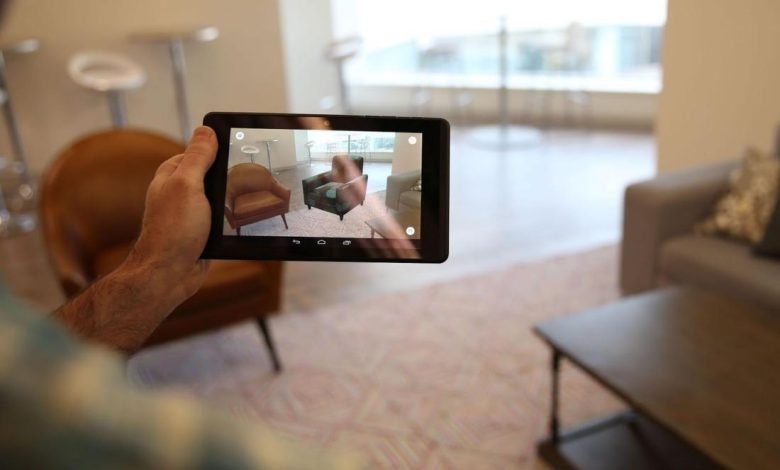How Augmented Reality is Revolutionizing the World of Interior Design

The emergence of Augmented Reality in interior design has revolutionized the way designers create and present their ideas. With the help of Augmented Reality Applications such as AR furniture apps, designers can now provide their clients with an immersive and interactive experience that allows them to see how their new space would look and feel before it is even built. This has significantly reduced the chances of miscommunication and misunderstandings between designers and clients. With the AR furniture app, clients can browse through thousands of furniture and decor items and drag-and-drop them into the 3D floor plan of their space, giving them the freedom to customize and experiment with different designs. Augmented Reality has played a role in the growth of e-commerce in interior design by enabling customers to preview products before making a purchase, thereby enhancing their shopping experience. It is evident that Augmented Reality is leading the way in the future of interior design.
How Augmented Reality Can Revolutionize Interior Design: Exploring the Potential Applications and Benefits
- Enhanced Visualization: AR technology allows interior designers and customers to visualize and explore different design concepts, furniture placements, and color schemes in real-time, providing a more accurate representation of the final product.
- Personalized Experience: With Augmented reality apps, customers can customize their design preferences, visualize different materials, and see how different furniture pieces will look in their space, resulting in a more personalized and satisfying design experience.
- Improved Communication: AR provides a shared visual language for designers and customers, making it easier to communicate design ideas and changes in real-time, reducing the likelihood of misunderstandings or errors.
- Time and Cost Savings: AR eliminates the need for physical samples or prototypes, saving designers and customers time, money, and resources.
- Increased Sales: AR service provides a more immersive and interactive design experience, which can increase customer engagement and ultimately lead to increased sales and customer satisfaction.
- Design Flexibility: Designers experiment with flexible and adaptable designs that meet each customer’s unique needs by using AR.
AR helps designers to create more accurate, personalized, and engaging designs while providing customers with a more immersive and satisfying design experience.

Interior Design Process with AR Technology
The use of AR technology in the interior design process usually involves the following steps:
- Consultation: The designer and customer meet to discuss design preferences, budget, and project scope. During this consultation, the designer may also capture 3D measurements of the space.
- 3D Modeling: Using the captured measurements, the designer creates a 3D model of the space using AR software. The designer can then experiment with different design concepts, materials, and furniture placements in real-time.
- Visualization: Once the 3D model is complete, the designer and customer can use AR technology to visualize different design concepts and furniture placements in the actual space. Customers can also customize their design preferences, such as changing color schemes or furniture styles, in real-time.
- Iteration: Based on customer feedback, the designer can make changes to the design concepts and furniture placements until the customer is satisfied with the final design.
- Implementation: After the design is finalized, the designer can provide the customer with a virtual shopping list of furniture and materials needed to complete the design. The customer can then purchase the items online or in-store.
Type of Augmented Reality for Interior Designers
- Marker-Based AR: This type of AR technology uses markers or images to trigger virtual objects or information. In interior design, designers can use marker-based AR to create virtual images of furniture or design elements that can be superimposed onto a physical space.
- Markerless AR: This technology uses GPS, sensors, and other tracking methods to superimpose virtual objects onto the real world. Markerless AR can be used to visualize how natural light will affect a space or to create virtual tours of a space.
- Projection-Mapping: This AR technology projects images or videos onto physical surfaces, creating an interactive and immersive experience. In interior design, projection mapping can showcase different design concepts or simulate the effects of lighting or color schemes in a space.
- Smart Glasses: Smart glasses are wearable AR devices that can be used to visualize and interact with virtual design elements in real-time. In interior design, smart glasses can be used to provide a hands-free design experience, enabling designers to visualize and interact with design elements without the need for physical prototypes or samples.
- Web AR: Web AR is an emerging technology that allows AR experiences to be accessed through a web browser without the need for a dedicated app. Web AR is particularly useful for interior designers as it enables them to create interactive and engaging AR experiences that can be easily accessed by customers through their web browser.

The AR market in interior design has undergone noteworthy expansion in the recent past and is anticipated to maintain its upward trajectory in the foreseeable future. As per a report published by MarketsandMarkets, the global AR in interior design market size is projected to grow from USD 419 million in 2020 to USD 1,815 million by 2025, at a Compound Annual Growth Rate (CAGR) of 34.5% during the forecast period.





